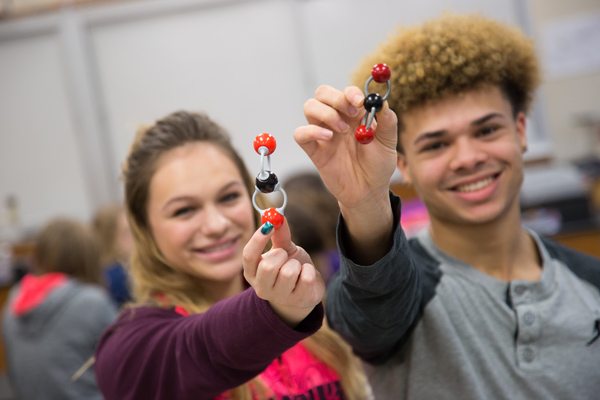Why are we watching this in Chemistry class?
It is first block and we just finished watching a TED talk by former president of Ireland, Ms. Mary Robinson. We watched this as part of a mini-project on CO2 (carbon dioxide), the conclusion of a chapter about naming compounds.
Ms. Robinson addresses many aspects of the consequences of increased CO2 emissions. She highlights how climate change is not just about changes in temperature, sea levels and other numbers, but how communities are affected by it. Communities of people. People who often live in countries and areas that do not so much contribute to CO2 emissions yet are highly affected by the changes that are happening in our climate right now. She explains how climate change therefore is also a matter of social justice.
And inevitably, when we have finished watching the TED talk, the question comes. “Why are we watching all this in a Chemistry class?” Two students ask the same question. How did social justice and human rights end up in first block Chemistry? I get this question a lot. Anything that does not directly come from the textbook needs to be justified in this class.
“It’s a very valid question”, I respond and I return the question to the class. “Why do we watch something like this in Chemistry class? “ Lots of students respond and eventually we come back to where we started – if there is a link between climate change and CO2, then that puts chemistry right in the center of it. We talk about how the study of climate change requires an interdisciplinary approach and how it will have political consequences as well. After all, who will pay for relocation of the communities that live on disappearing barrier islands off the US coastline? Or fishing communities in Alaska? These are tough and big questions and I believe that occasionally they do have a place in Chemistry class. We are after all called to be stewards of creation and to care for our neighbors.
And so, when the conversation comes to an end, we start to investigate how much CO2 our cars produce. Each student calculates how much CO2 he or she produces from driving. We add things like electricity and natural gas use at home, flights, etc. and we compare the CO2 emissions of a typical Western family with those of for example a homeless person. And slowly but steadily the awareness kicks in. Non-stop air-conditioning, cars with a fuel efficiency of 15 mpg – they do really add to your emissions, not to mention energy bills.
This is why we do this in Chemistry class. To learn some of the things we need to know in order to be and to become responsible stewards.

Student models of C02 molecules.
